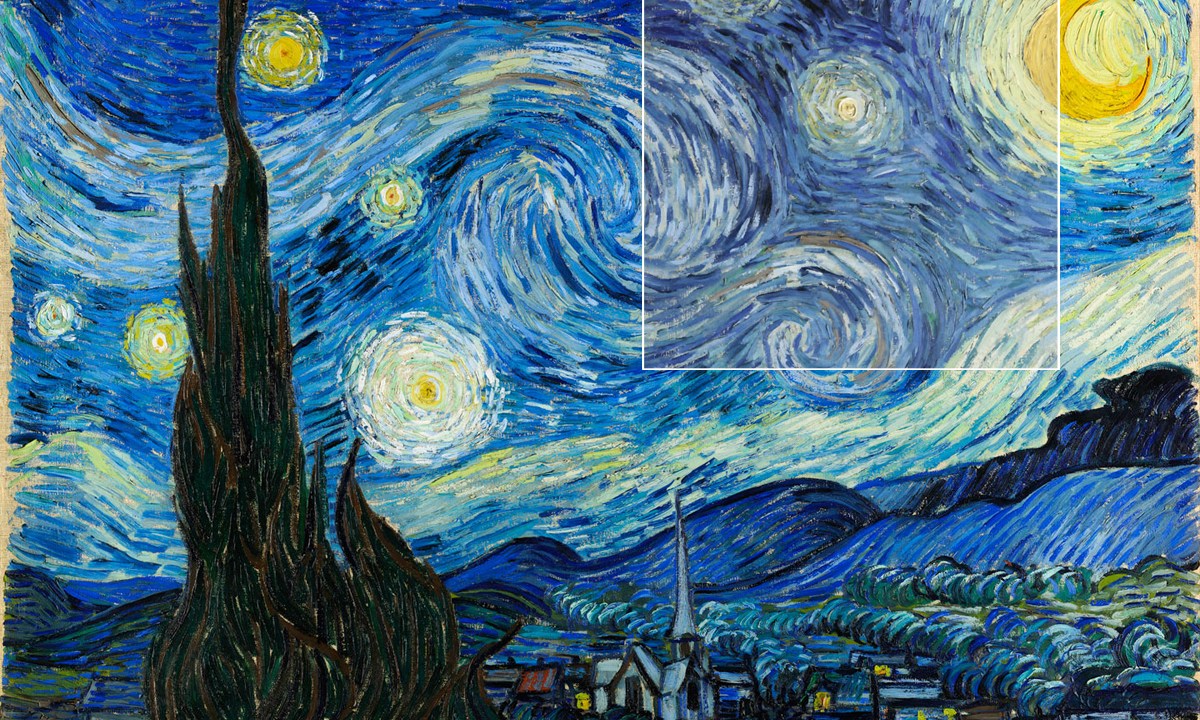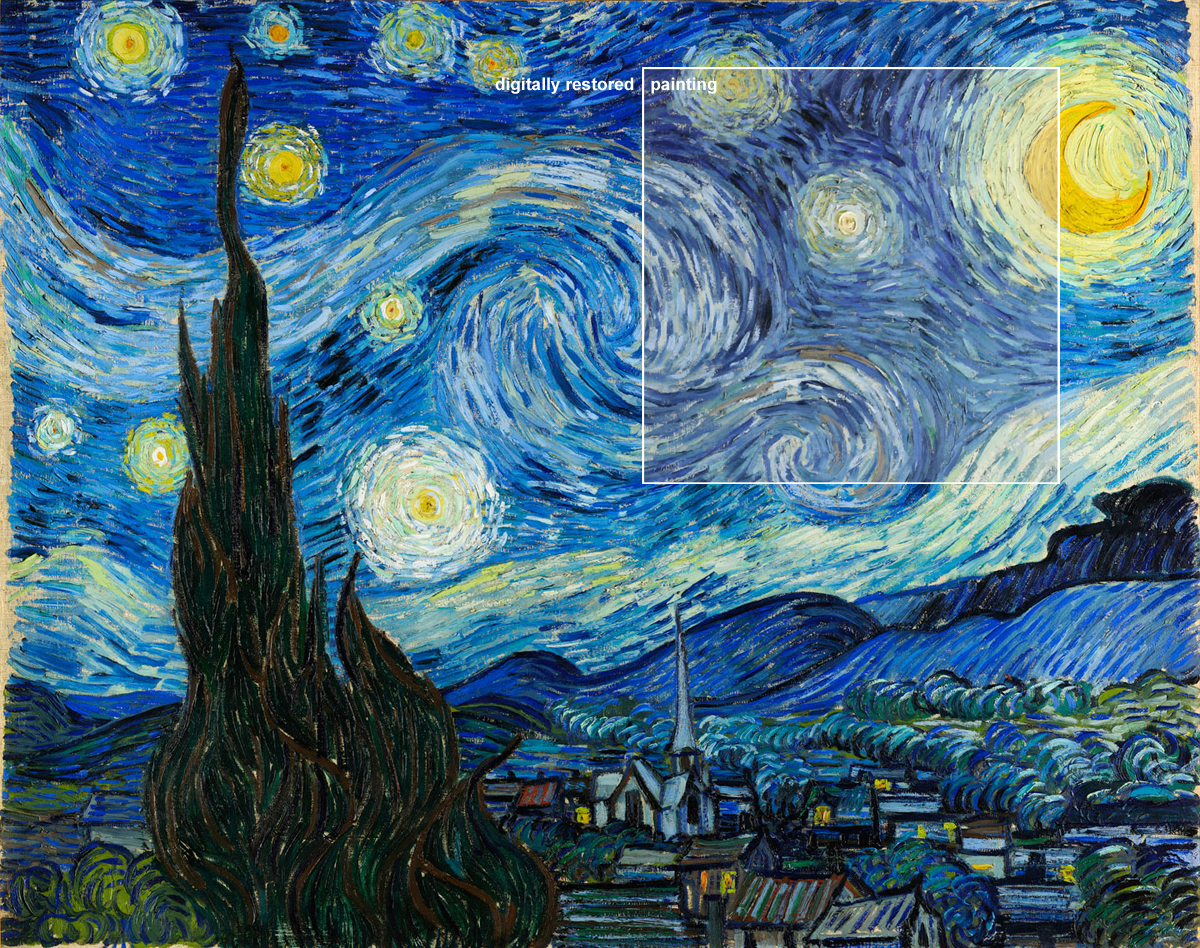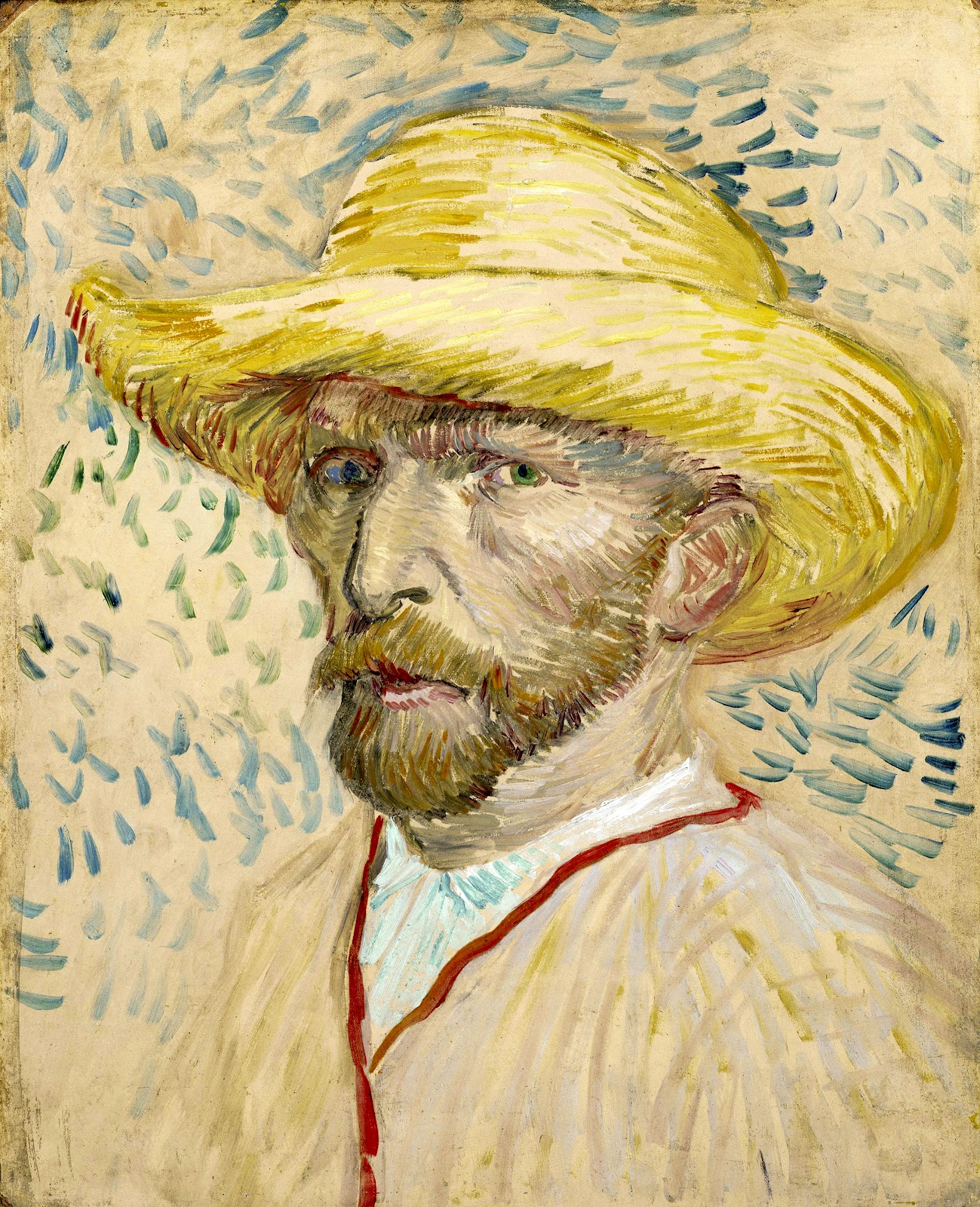
This weekend in Amsterdam we opened an exhibition around the works of the famous Dutch painter Vincent van Gogh, Van Gogh, My Dream Exhibition. It’s a special exhibition in a number of ways and most obviously because not a single work in the exhibition is a ‘real Van Gogh.’ The works on display are photographic reproductions (partly) restored to their original colours and a set of 3D animations inspired by Van Goghʼs works and letters.
The website of the exhibition, which mimics the digital restoration process, sparked quite some discussion on Twitter, amongst others with Suse Cairns and Mia Ridge. In response Elizabeth Merritt asked me to reflect on the challenges and opportunities of reproductions in the museum context. As I wrote earlier I do believe Van Gogh, My Dream Exhibition is a wonderful experience and from the feedback we get on Twitter and in gallery, visitors enjoy the colours and stories in the exhibition. This leads me to answer some questions that might immediately be asked:
- Do visitors mind seeing reproductions instead of ‘the real thing’?
The honest answer is, I don’t know. We clearly tell people at the entrance and in all promotional materials that this is an exhibition of reproductions, so people come prepared. We’ve had a handful of negative comments online (but who hasn’t?) by people who preferred the real thing. Eavesdropping on visitors, I’ve not heard them mention it. Instead, they focus on things other than the price tag of a real Van Gogh, the beautiful frame or the bad lightning needed to preserve the piece. - If people don’t seem to mind reproductions, does this challenge our right to exist as museums with collections?
No. Van Gogh, My Dream Exhibition doesn’t show anything that replaces the real Van Gogh paintings. It adds to them. Personally I can say the exhibition changed my way of looking at Van Gogh and I can’t wait to see the original paintings again. More generally we see it as a new interpretation of Van Gogh, just as it is completely accepted to reinterpret Shakespeare or Vivaldi to reach new and wider audiences with their art. - Is a reproduction exhibition a viable business model for struggling museums?
Of course there are financial advantages to using reproductions. Insurance, for instance. At the same time, most of the costs of an exhibition are fixed even if you don’t put anything on the wall, and it’s not cheap. Van Gogh, My Dream Exhibition was initiated by a team of (cultural) entrepreneurs and paid for without using public money. It’s possible to organise exhibitions without (public) funding if you manage to work differently as a team, not by definition because you use reproductions. - Is this possible with all collections?
I’m not sure how to replicate a Rothko, but I’m pretty sure that if you have a good enough story to tell, you can tell it in any creative way possible. There’s no need for an original object to tell a story. There is, however, a need for original objects if you want to show original objects. I don’t think anybody checks the Mona Lisa off their list after having seen a copy (or do they?) - And finally: what is the next step with this? Where does this go?
It’s tempting to look forward to the possibilities in a couple of years. Seb Chan recently described a 3D copying project at the Art Institute of Chicago. Obviously cheap 3D printing makes it possible to replicate many more and different objects. At the same time our online collections get better and better and there’s a lot of research into building 3D models from 2D images. This means that it is likely people around the world will start printing our (public domain) collections for their own use. This, of course, is a huge opportunity and a considerable challenge for all of us, but one that is exciting to witness.
Van Gogh, My Dream Exhibition opens up the world of Van Gogh to thousands of people from around the world. Our explicit aim is to reach new and wider audiences, which seems to work looking at the visitors we’ve had in the first days, and the press that covered us. The temporary exhibition is not designed to replace museums, but if we get them to think differently about exhibitions and get a new audience to explore them, we would be very happy.
As Jasper notes, the costs of borrowing/lending high-value works are going up, along with the risks. Would you prefer to send reproductions on tour rather than putting originals at risk? Can you afford to borrow the originals you would like to exhibit? Museums are struggling to cover the costs of storing and maintaining ever-growing collections. Would your/does your museum use digital reproductions of works in other collections (public or private) to supplement your own? We are honing our ability to create relatively inexpensive, high quality reproductions, potentially embellished by AR and other enhancements. Might the increased use of copies, driven by all these forces, change people’s attitudes toward authentic objects? And, in turn, how might that affect how museums see their charge to “collect and preserve?” Perhaps the collections plan of the future will include a section on materials that will be maintained as digital data, and fabricated as needed…











I'm with Jasper, reproductions are not substitutes of real objects in this kind of exhibitions. Are interpretations, evocations of the original, that retains its "halo", or even increases it (W. Benjamin maybe?)
Re: Do visitors mind seeing reproductions instead of ‘the real thing’?
The honest answer is, I don’t know.
——
I might have empirical evidence for you in about a year. I've been conducting a study on what people think "the real thing" is in museums and I will wrap up and write about the study next summer. Also, I point you to my other work on the meaning of museum objects (real ones) at http://kentstate.academia.edu/KierstenFLatham
@KF Latham, please do send me an email (jasper at inspiredbycoffee.com) when you finish your study. I know a lot of people who'd love to read it! Thanks.
KF Latham–thank you for the link. I would love to hear more about your study when it is complete, and to invite you to blog about it for CFM. email me? emerritt@aam-us.org.